GALLERY & BLOG

Welcome to the Gallery & Blog section, where I’ll regularly post pictures, share news and report any discoveries that come to light. I’ll certainly be grateful to hear from you and receive pictures or other news items of interest. Many thanks! – Charlotte Jacob-Hanson
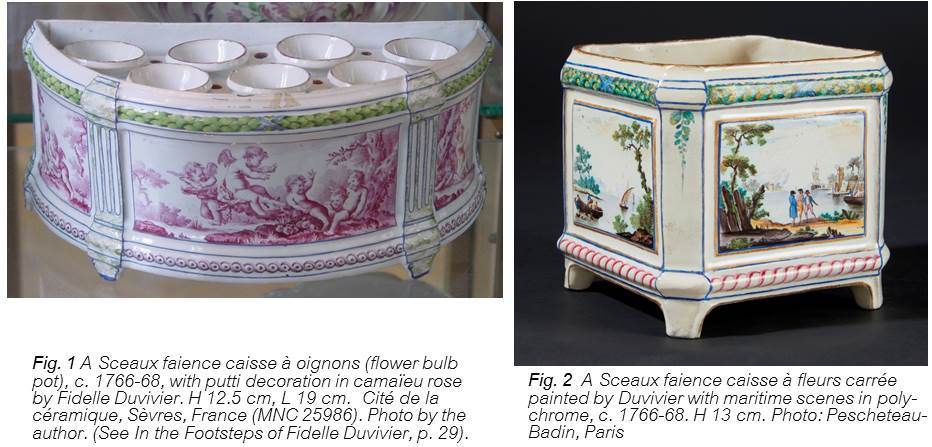
The Gentle Art of Forcing Bulbs
In addition to the example shown in my book (Fig. 1), the Sceaux manufactory made bulb pots in a great variety of shapes in faience, and some of those sold at French auctions in recent years were also decorated by Fidelle Duvivier (Figs. 2, 12), as it turns out.(i) What kinds of bulbs bloomed on these delicate devices and what were they filled with? The answers to these questions take us into the history of the cultivated hyacinth in Europe.
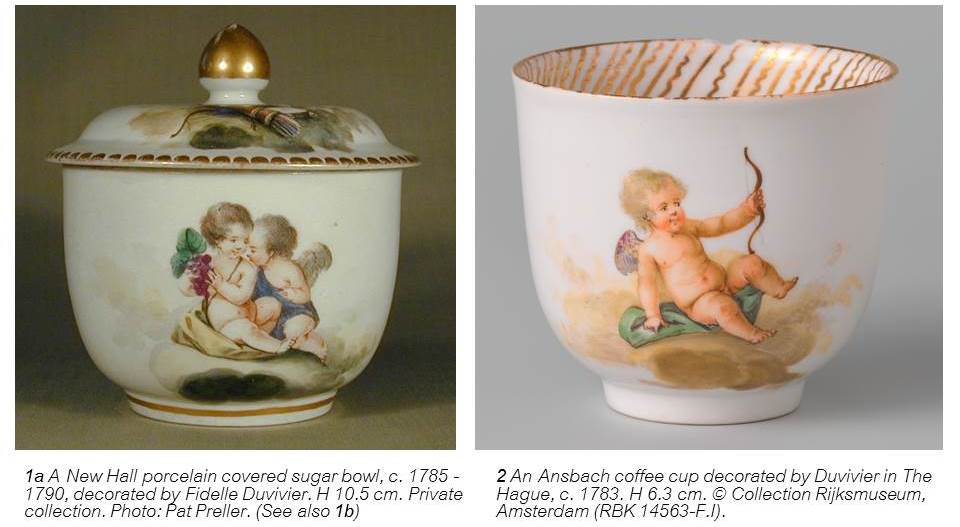
More Cherubs on Clouds, painted in The Hague
Fidelle Duvivier decorated porcelain with putti (also variously called cupids or cherubs) at every manufactory where he worked – at Derby, Sceaux, Loosdrecht, and New Hall (1a,b). Most were painted in puce camaïeu, and some of his finest examples are found on Loosdrecht porcelain (as shown in my book). But while in the Netherlands he also painted a few of these ethereal beings on Ansbach porcelain – for the Lyncker family of The Hague.(i)
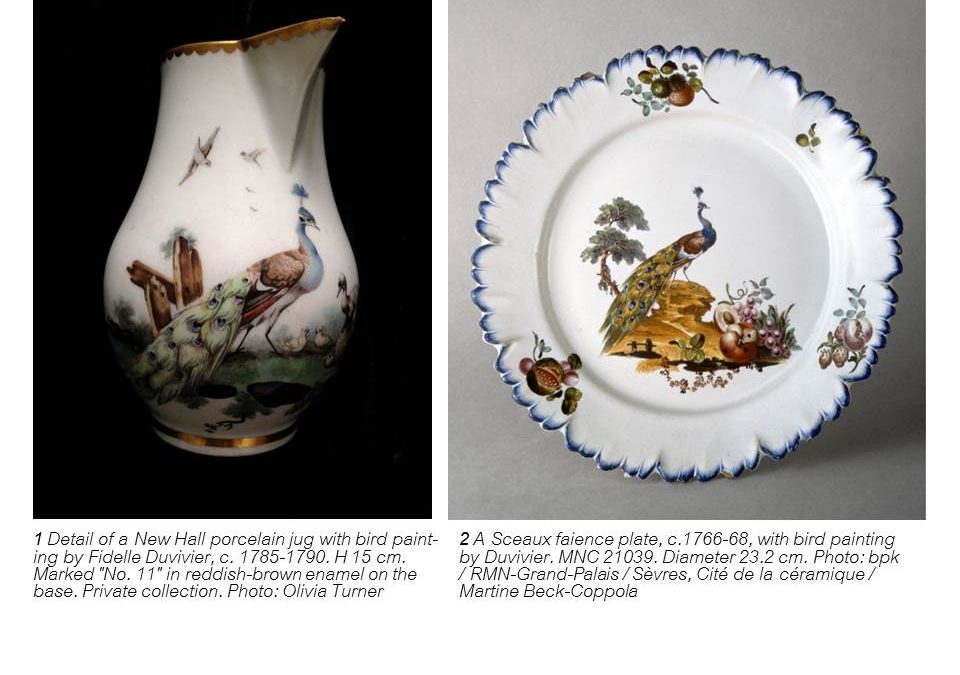
Duvivier’s Peacocks and a Peahen
It is extremely fortunate that an extensive New Hall porcelain service painted with birds by Fidelle Duvivier, and auctioned by Christie’s in London in 1988, has survived intact to the present day in a private English collection. The milk jug of this service (i) is a particularly striking piece with its splendid peacock. It helped me to identify several other depictions of peafowl on Sceaux faience (ii) and Mennecy porcelain (iii) as his work, which were also included in my Duvivier book.
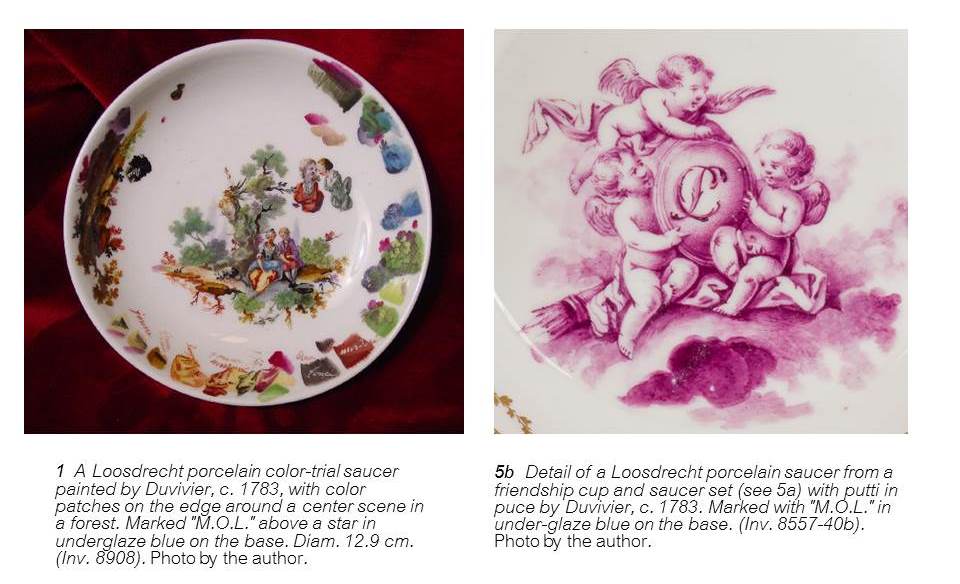
Duvivier Treasures at Kasteel-Museum Sypesteyn, Loosdrecht
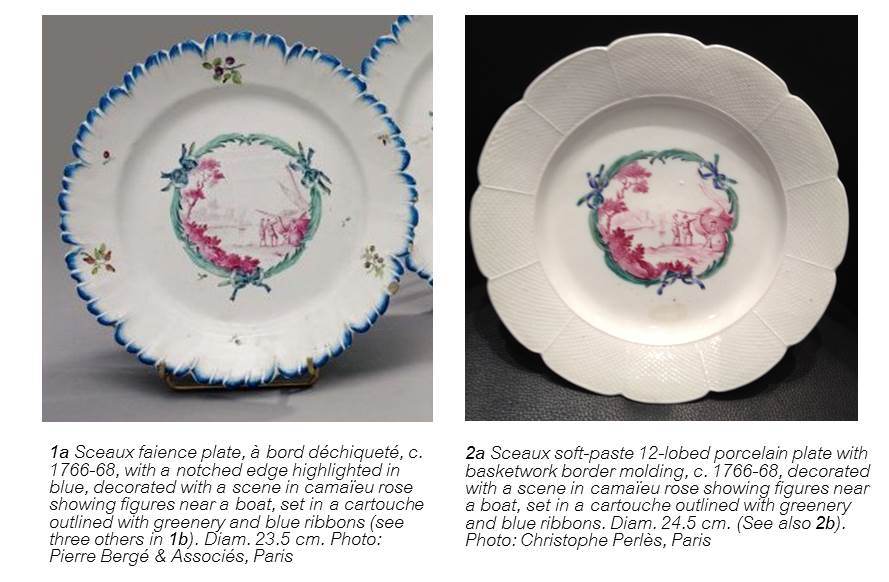
Sceaux Rarities in Faience and Porcelain – a Near Match
Both of these unmarked plates were made during the Jacques and Jullien period (1763-1772) at the Sceaux manufactory and decorated by Fidelle Duvivier during his first employment there,
c. 1766-68. By this time these two managing partners were openly making porcelain since the royal monopoly on porcelain production held by Vincennes was no longer being enforced.(i)
